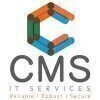
i
Infovision
Filter interviews by
Infovision Data Engineer Interview Questions and Answers
10 Interview questions
Delete removes rows one by one and can be rolled back, while Truncate removes all rows at once and cannot be rolled back.
Delete is a DML command, while Truncate is a DDL command.
Delete can be rolled back using a transaction, while Truncate cannot be rolled back.
Delete fires triggers on each row deletion, while Truncate does not fire triggers.
Delete is slower as it removes rows one by one, while Truncate is faster ...
Identifying long running queries in SQL
Monitor query execution times using tools like SQL Server Profiler or Performance Monitor
Check system views like sys.dm_exec_requests or sys.dm_exec_query_stats for query durations
Use query hints like OPTION (RECOMPILE) to force recompilation of queries for better performance
To perform a full load in SSIS, you can use the Data Flow Task with a source and destination component.
Create a Data Flow Task in the Control Flow tab of the SSIS package.
Add a source component to extract data from the source system.
Add a destination component to load data into the destination system.
Map the columns from the source to the destination.
Run the package to execute the full load.
Window functions in SQL are used to perform calculations across a set of table rows related to the current row.
Window functions are used to calculate values based on a set of rows related to the current row.
They allow for ranking, aggregation, and other calculations within a specific window of rows.
Common window functions include ROW_NUMBER(), RANK(), DENSE_RANK(), and SUM() OVER().
Snowflake is a cloud-based data warehousing platform that allows for easy and scalable data storage and analysis.
Snowflake is a fully managed service that works on a pay-as-you-go model.
It separates storage and compute resources, allowing for better scalability and cost-effectiveness.
Snowflake supports SQL queries and has built-in support for semi-structured data like JSON and XML.
It provides features like automat...
Fact tables store quantitative data for analysis, while dimension tables store descriptive attributes related to facts.
Fact tables contain measurable, quantitative data (e.g., sales revenue, order quantity).
Dimension tables contain descriptive attributes (e.g., product name, customer details).
Fact tables often have foreign keys linking to dimension tables.
Example: A sales fact table might include total sales, whil...
Use SQL MERGE to efficiently insert or update records based on incoming data.
MERGE statement combines INSERT and UPDATE operations in one command.
Example: MERGE INTO target_table USING source_table ON target_table.id = source_table.id.
When a match is found, use UPDATE to modify existing records.
When no match is found, use INSERT to add new records.
Example syntax: WHEN MATCHED THEN UPDATE SET target_table.col1 = so...
To insert non-duplicate data into a target table, you can use methods like using a unique constraint, using a merge statement, or using a temporary table.
Use a unique constraint on the target table to prevent duplicate entries.
Use a merge statement to insert data into the target table only if it does not already exist.
Use a temporary table to store the new data, then insert only the non-duplicate records into the ...
Incremental load in ADF and SSIS involves identifying new or updated data and loading only those changes.
In ADF, use watermark columns to track the last loaded value and filter data based on this value
In SSIS, use CDC (Change Data Capture) components or custom scripts to identify new or updated data
Both ADF and SSIS support incremental loading by comparing source and target data to determine changes
Linked Service connects to external data sources, while Dataset represents the data within the data store.
Linked Service is used to connect to external data sources like databases, APIs, and file systems.
Dataset represents the data within the data store and can be used for data processing and analysis.
Linked Service defines the connection information and credentials needed to access external data sources.
Dataset d...
Infovision Data Engineer Interview Experiences
1 interview found
I appeared for an interview in Jan 2024.
(15 Questions)
- Q1. What are window functions in SQL
- Ans.
Window functions in SQL are used to perform calculations across a set of table rows related to the current row.
Window functions are used to calculate values based on a set of rows related to the current row.
They allow for ranking, aggregation, and other calculations within a specific window of rows.
Common window functions include ROW_NUMBER(), RANK(), DENSE_RANK(), and SUM() OVER().
- Q2. ETL - How to do full load in SSIS, mention the steps
- Ans.
To perform a full load in SSIS, you can use the Data Flow Task with a source and destination component.
Create a Data Flow Task in the Control Flow tab of the SSIS package.
Add a source component to extract data from the source system.
Add a destination component to load data into the destination system.
Map the columns from the source to the destination.
Run the package to execute the full load.
- Q3. ETL- how to do the incremental load in ADF and in SSIS
- Ans.
Incremental load in ADF and SSIS involves identifying new or updated data and loading only those changes.
In ADF, use watermark columns to track the last loaded value and filter data based on this value
In SSIS, use CDC (Change Data Capture) components or custom scripts to identify new or updated data
Both ADF and SSIS support incremental loading by comparing source and target data to determine changes
- Q4. Linked Service Vs Dataset
- Ans.
Linked Service connects to external data sources, while Dataset represents the data within the data store.
Linked Service is used to connect to external data sources like databases, APIs, and file systems.
Dataset represents the data within the data store and can be used for data processing and analysis.
Linked Service defines the connection information and credentials needed to access external data sources.
Dataset define...
- Q5. What is IR - integration Runtime? what are the types of IR
- Ans.
Integration Runtime (IR) is a compute infrastructure that provides data integration capabilities across different network environments.
IR is used in Azure Data Factory to provide data integration capabilities
There are three types of IR: Azure, Self-hosted, and Azure-SSIS
Azure IR is fully managed by Microsoft and is used for data movement in the cloud
Self-hosted IR allows data movement between on-premises and cloud data...
- Q6. Scenario: In ADF, if we have files in FTP folder, how to get it to ADLS where the file size > 10mb.
- Ans.
Use Azure Data Factory to transfer files >10MB from FTP to ADLS efficiently.
1. Create a linked service for FTP in ADF to connect to the FTP server.
2. Create a linked service for ADLS to connect to your Azure Data Lake Storage.
3. Use a Copy Data activity in a pipeline to transfer files.
4. Set up a filter in the Copy Data activity to only select files larger than 10MB.
5. Schedule the pipeline to run at desired interva...
- Q7. How to copy data without using multiple activities. Dynamically using loops/ parameterization.
- Ans.
Use a single activity with dynamic parameterization and loops to copy data.
Use a loop to iterate through the data source and destination locations.
Parameterize the source and destination locations to dynamically copy data.
Utilize a scripting language like Python or PowerShell to implement the logic.
Example: Use a Python script with a loop to copy files from one folder to another.
Example: Use PowerShell script with dyna...
- Q8. Datawarehouse - What is a Fact and Dimention table
- Ans.
Fact tables store quantitative data for analysis, while dimension tables store descriptive attributes related to facts.
Fact tables contain measurable, quantitative data (e.g., sales revenue, order quantity).
Dimension tables contain descriptive attributes (e.g., product name, customer details).
Fact tables often have foreign keys linking to dimension tables.
Example: A sales fact table might include total sales, while a p...
- Q9. What is snowflake?
- Ans.
Snowflake is a cloud-based data warehousing platform that allows for easy and scalable data storage and analysis.
Snowflake is a fully managed service that works on a pay-as-you-go model.
It separates storage and compute resources, allowing for better scalability and cost-effectiveness.
Snowflake supports SQL queries and has built-in support for semi-structured data like JSON and XML.
It provides features like automatic sc...
- Q10. Agile - Scrum team size?
- Q11. SQL - (Merge) Insert / update data based on the incoming data.
- Ans.
Use SQL MERGE to efficiently insert or update records based on incoming data.
MERGE statement combines INSERT and UPDATE operations in one command.
Example: MERGE INTO target_table USING source_table ON target_table.id = source_table.id.
When a match is found, use UPDATE to modify existing records.
When no match is found, use INSERT to add new records.
Example syntax: WHEN MATCHED THEN UPDATE SET target_table.col1 = source_...
- Q12. SQL - Delete Vs Truncate ?
- Ans.
Delete removes rows one by one and can be rolled back, while Truncate removes all rows at once and cannot be rolled back.
Delete is a DML command, while Truncate is a DDL command.
Delete can be rolled back using a transaction, while Truncate cannot be rolled back.
Delete fires triggers on each row deletion, while Truncate does not fire triggers.
Delete is slower as it removes rows one by one, while Truncate is faster as it...
- Q13. How to insert non-duplicate data into target table. how many ways we can do.
- Ans.
To insert non-duplicate data into a target table, you can use methods like using a unique constraint, using a merge statement, or using a temporary table.
Use a unique constraint on the target table to prevent duplicate entries.
Use a merge statement to insert data into the target table only if it does not already exist.
Use a temporary table to store the new data, then insert only the non-duplicate records into the targe...
- Q14. SQL - how do you identify the long running queries.
- Ans.
Identifying long running queries in SQL
Monitor query execution times using tools like SQL Server Profiler or Performance Monitor
Check system views like sys.dm_exec_requests or sys.dm_exec_query_stats for query durations
Use query hints like OPTION (RECOMPILE) to force recompilation of queries for better performance
- Q15. SQL - online test given with 3 queries. One is related to Joins , second one is related to Agg functions, and 3rd is related to LAG function.
Skills evaluated in this interview
Top trending discussions






Interview questions from similar companies

I applied via Naukri.com and was interviewed before Mar 2020. There were 4 interview rounds.
Interview Questionnaire
4 Questions
- Q1. Difference between Hashtable and hashmap?
- Ans.
Hashtable is synchronized while hashmap is not.
Hashtable is thread-safe while hashmap is not.
Hashtable does not allow null keys or values while hashmap allows one null key and multiple null values.
Hashtable is slower than hashmap due to synchronization.
Hashtable is a legacy class while hashmap is a newer implementation.
- Q2. Difference between hashmap and concurrent hashmap?
- Ans.
Hashmap is not thread-safe while Concurrent Hashmap is thread-safe.
Hashmap is not suitable for multi-threaded environments as it can lead to race conditions and data inconsistencies.
Concurrent Hashmap allows multiple threads to access and modify the map concurrently without any data inconsistencies.
Concurrent Hashmap uses a technique called lock striping to achieve thread-safety.
Concurrent Hashmap is slower than Hashma...
- Q3. Jdbc step
- Q4. Spring ioc
Interview Preparation Tips
Skills evaluated in this interview

I appeared for an interview in Sep 2017.
Interview Questionnaire
4 Questions
- Q1. Technical interview take by client technical person actually they are hiring for another client so they took total 3 technical round and final will HR round
- Q2. Asking about life cycle of Dot net mvc contols entity frame work and SQL queries
- Q3. Problem based on oops and SQL queries outputs
- Q4. Basic questions about my self ,salary discussion basic formalities form I have to fill up
Interview Preparation Tips
Experience: There were around 15 objective question that includes mvc, c#.net and SQL server. It was very simple question like different types of filters,Acton results in mvc. Basic oops concept and dot net web page regarding
Round: Resume Shortlist
Experience: After completing test round another was technical round discussed maily for mvc and SQL server questions. Around 30 mint discussion. After qualify this round another round will start from client technical staff.
General Tips: It was for 2-3 year experience person very simple to crack but focus on you which profile you are looking for study interview questions from net
Skills: Dot net mve oops concept jQuery and SQL server

I applied via Naukri.com and was interviewed before May 2018. There were 5 interview rounds.
Interview Questionnaire
4 Questions
- Q1. Telephonic technical
- Q2. Core Java related exception handling ,design pattern ,oops solid design principle, rest API, different annotations of spring and jpa
- Q3. Same questions on telephonic round but detailed elaborate and given simple problem statement we had to justify that why it's time n space complexity valid. Rest API questions hibernate orm use
- Q4. Manager round just to check whether you have actually worked on project or not stress testing performance questions scenario questions
Interview Preparation Tips
Skills: Core Java sevlet JSP hibernate spring rest API, Communication, Body Language, Problem Solving, Analytical Skills, Decision Making Skills
Duration: 1-4 weeks

I appeared for an interview in Sep 2019.
Interview Questionnaire
1 Question
- Q1. Pl sql related questions
Interview Preparation Tips
Laterly after I had lunch by 2pm Hr came n told me that Manager is not available now so we will be conducting ur further round in weekdays.
Then there was no mail or call so I purposely mailed them still haven't got proper response from them, so at last I told my friend who referd me to ask for an update the same HR told him that they want Immediate joiner so we can't process him to further round. Wasted my whole day over there

I applied via Recruitment Consultant and was interviewed before Jan 2020. There were 5 interview rounds.
Interview Questionnaire
1 Question
- Q1. What Prog Languages known? Prior Software Experience? How good on U.S. Client Face to Face and telephonic interaction for projects?
- Ans.
I am proficient in Java, Python, and C++. I have 2 years of experience in software development. I have excellent communication skills for client interaction.
Proficient in Java, Python, and C++
2 years of software development experience
Excellent communication skills for client interaction
Interview Preparation Tips

Interview Questionnaire
2 Questions
- Q1. Basics from all framework you have worked on.
- Q2. There working all are non technical people's they don't know the projects here major people working in testing and non related work

I appeared for an interview before Nov 2020.
Interview Questionnaire
3 Questions
- Q1. Simple and Easy questions on OOPS, static variable, Prioriry queue,
- Q2. Design question,
- Q3. Binary Search
Interview Preparation Tips

I applied via Naukri.com and was interviewed before Sep 2020. There were 4 interview rounds.
Interview Questionnaire
1 Question
- Q1. IOS Basics , iPhone programming
Interview Preparation Tips

I applied via Naukri.com and was interviewed before Apr 2021. There was 1 interview round.
(2 Questions)
- Q1. Basic python list tuples set dictionary related questions
- Q2. Decorators generator and django rest framework
Interview Preparation Tips
Infovision Interview FAQs
Some of the top questions asked at the Infovision Data Engineer interview -
Tell us how to improve this page.
Infovision Interviews By Designations
- Infovision Senior Technical Lead Interview Questions
- Infovision Software Engineer Interview Questions
- Infovision Senior Software Engineer Interview Questions
- Infovision Marketing Manager Interview Questions
- Infovision Marketing Executive Interview Questions
- Infovision Business Analyst Interview Questions
- Infovision Head Operations Interview Questions
- Infovision Senior Executive Interview Questions
- Show more
Interview Questions for Popular Designations
- Software Engineer Interview Questions
- Senior Engineer Interview Questions
- System Engineer Interview Questions
- Data Analyst Interview Questions
- Senior Data Engineer Interview Questions
- Developer Interview Questions
- Azure Data Engineer Interview Questions
- Big Data Engineer Interview Questions
- Show more
Overall Interview Experience Rating
based on 1 interview experience
Difficulty level
Duration
Data Engineer Interview Questions from Similar Companies
|
Softwaretest Engineer
333
salaries
| ₹2.6 L/yr - ₹6.2 L/yr |
|
Senior Software Engineer
322
salaries
| ₹10.8 L/yr - ₹20 L/yr |
|
Software Engineer
277
salaries
| ₹4 L/yr - ₹9.3 L/yr |
|
Technical Specialist
207
salaries
| ₹14.3 L/yr - ₹27 L/yr |
|
Technical Lead
189
salaries
| ₹16.5 L/yr - ₹29.4 L/yr |

ITC Infotech

CMS IT Services

KocharTech

Xoriant
- Home >
- Interviews >
- Infovision Interview Questions














